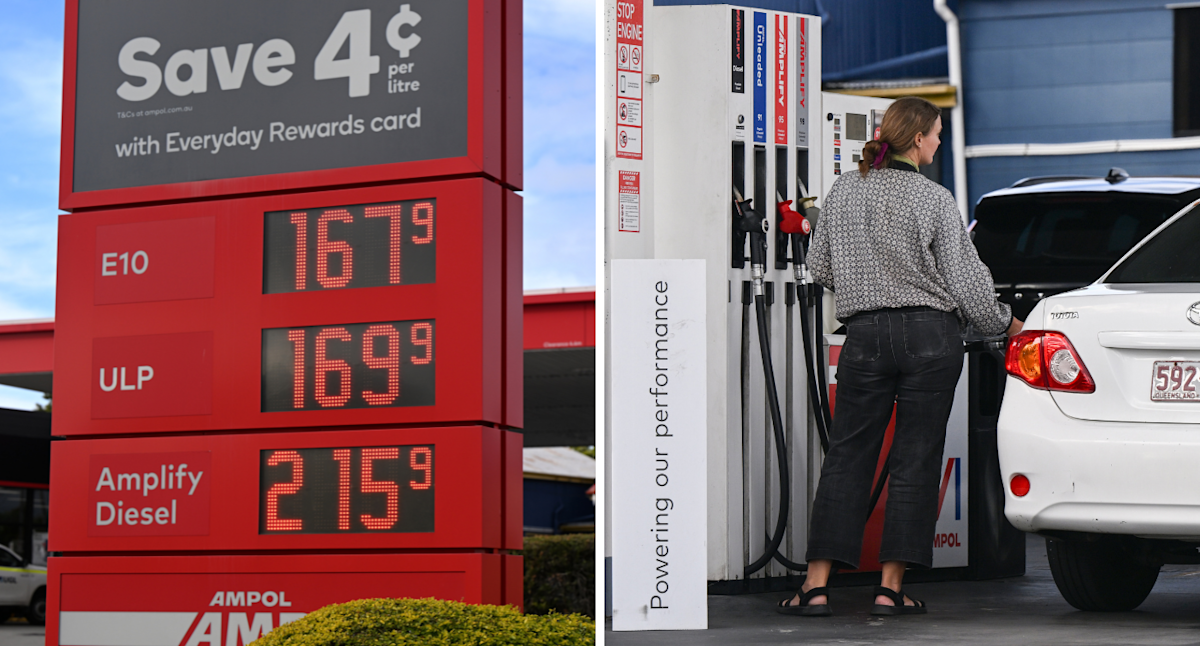Australian motorists will pay more for petrol and diesel following another fuel excise increase this week. (Source: AAP)
Aussie motorists will pay more for petrol and diesel at the bowser from this week following another increase to the fuel excise. The fuel excise increases twice a year in line with inflation in February and August.
The fuel excise on petrol and diesel rose from 50.8 to 51.6 cents per litre on Monday. This is a flat sales tax levied by the federal government on petrol and diesel bought at the bowser, and is on top of GST.
Based on filling up a 55L tank, the increase works out to an extra 44 cents per tank. Aussie motorists paid an estimated $15.71 billion in net fuel excise in 2023-24 and are expected to pay $67.6 billion over the four years to 2026-27.
RELATED
The Victorian Automobile Chamber of Commerce (VACC) has criticised the increase, saying it would lead to higher prices for families and businesses already struggling with cost-of-living pressures.
“This is an indiscriminate tax that disproportionately affects low-income earners and families who rely on their vehicles for work and essential travel,” VACC CEO Peter Jones said.
The group has labelled the excise a “hidden tax”, given that it is built into the price displayed at the petrol pump.
“Motorists deserve transparency about how their fuel is priced. They need to understand that fuel excise isn’t a static tax – the government increases it every six months, and it’s a significant component of what they pay at the pump,” Jones said.
In the 2023-24 financial year, the Australian Automobile Association found the fuel excise bill for the typical household was about $1,283.
The fuel excise increases twice a year in line with the Consumer Price Index, which rose by 0.7 per cent in the June quarter and 2.1 per cent over the 12 months to June.
The fuel excise was originally introduced to help pay for our roads, with all or part of the excise earmarked for spending on roads between 1926 and 1959. But since then, it has generally been available for any spending.
Over the decade to 2022-23, the Australian Automobile Association found only 57 per cent of fuel excise was reinvested in land transport projects.
The fuel excise was halved for six months in 2022 by the previous Coalition government to ease cost-of-living pressures.
The Opposition also promised to halve the tax for 12 months should it win this year’s federal election and claimed it would save motorists $700 per year; however, this didn’t happen.
Story Continues
With more Aussies buying electric vehicles, the revenue generated from the fuel excise is expected to drop significantly.
A record of just over 10 per cent (13,169 vehicles) of new car sales were electric in June, according to data from the Federal Chamber of Automotive Industries and Electric Vehicle Council.
Australia’s new vehicle emissions standards, which became mandatory in July 2025, are designed to accelerate EV uptake.
Treasurer Jim Chalmers previously flagged a new road user charge that would include EV drivers to replace the fuel excise.
New South Wales has confirmed plans to introduce a road user charge from 2027, or when EVs reach 30 per cent of new car sales.
Get the latest Yahoo Finance news – follow us on Facebook, LinkedIn and Instagram.

